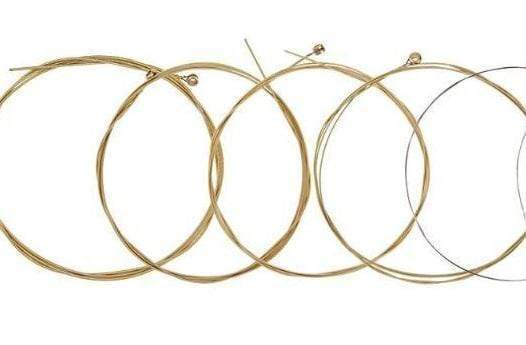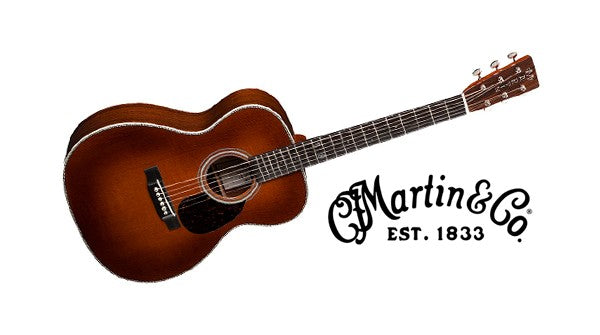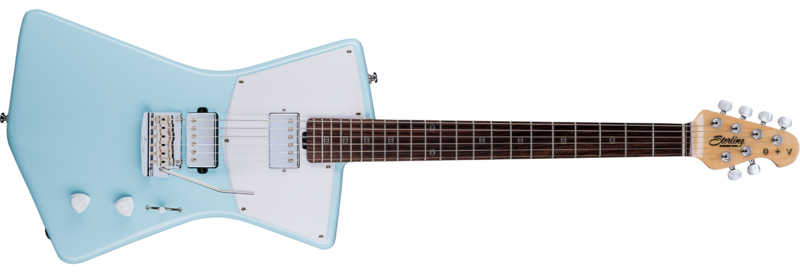Your Cart is Empty
How New Strings Can Reshape Your Guitar’s Sound and Feel
June 13, 2019 8 min read

All instruments have their strengths and weaknesses, and once you become familiar with a new guitar you may become frustrated by its limitations. It may seem like the best solution might be to upgrade to a guitar with a different tone wood if you aren’t satisfied with the guitar’s sound, or a new neck shape or scale length if you’re unhappy with the playability. But that is not always the best thing to do. In many cases, the easiest thing you can do is try a different type of strings. A new set of strings is usually the simplest and most cost-effective way to reshape your guitar’s sound and improve its playability.
So Many Options
Today there are more string options available than ever before in terms of string gauges, materials, brands and coatings. Each string option represents a potential change that you can use to reshape your guitar’s sound and playability. It’s important to remember that not every guitar is equipped to handle every type of guitar string. The bridge and nut on your guitar have been designed to handle a particular range of string gauges and certain types of string materials. Trying a new string gauge and material, or trying a type of string that has a particular coating, may be the key to getting the sound or playability that you are looking for from your guitar.
String Gauge
The nut on your guitar has been designed to handle a specific range of string gauges which the manufacturer is likely to put on your guitar’s spec list as the recommended brand and gauge for your guitar. Using strings that are too light or too heavy for your guitar can cause several problems that may make you unhappy with the way your guitar sounds and plays.
- Too Light
If the strings you are using are too light, it can adversely affect the string tension, making the strings too slack, which can result in buzzing frets and a feeling that the strings are simply too loose for comfortable playing. Reduced string tension may cause a slight change in your neck shape, causing it to go from being slightly concave to being slightly convex, which can cause tuning and intonation problems as well, requiring a truss rod adjustment and other alterations to be necessary to correct the action and intonation. Playing a slightly heavier gauge string may solve these problems instantly.
- Too Heavy
If the strings you are using are too heavy, on the other hand, the opposite problems are likely to occur. When your string gauge is too heavy, there will be too much tension on your guitar’s neck, the action will be too high and you will possibly experience tuning and intonation problems that will eventually have to be addressed with a truss rod adjustment. The strings will also feel tight and unwieldy, making bends and vibrato more difficult than they need to be. This can be corrected by trying a lighter gauge string.
- What About Scale Length?
Diane Ponzio from Martin Guitars Discusses Scale Length
Guitarists are creatures of habit. When we get a new guitar, we are likely to put a set of our favorite strings on it as soon as possible after buying it, often finding to our chagrin that the guitar we fell in love with at the guitar shop doesn’t feel or sound the same anymore. One of the biggest reasons why this happens is that the guitars we've played in the past and the new guitar we just started playing do not have the same scale length.
The term scale length refers to the physical dimensions of the guitar. Specifically, it is the distance from the inside edge of the nut to where the strings meet the saddle, and this distance determines the character or voice of the guitar more than any other factor. For instance, the voice that we associate with a Fender Stratocaster begins with its 25.5“ scale length, which differs from a Gibson SG which has a 24.75“ scale length. Even if you have identical pickups on an SG and a Strat, they will have distinctly different tones due to their scale length.
In terms of acoustic guitars, this accounts for the tonal differences between smaller guitars, like Parlour acoustics, and larger guitars like Dreadnoughts. Shorter scale guitars, like Parlour acoustics and 3/4 scale guitars, can take lighter strings and will have a lighter and brighter tone, the down side of which is a lack of low end projection. Larger acoustic guitars, like Dreadnoughts, are generally strung with heavier gauge strings which give them that booming tone they are so famous for.
The rule of thumb is that heavier gauge strings have more volume and bass, while lighter gauge strings are more trebly and melodic. On acoustic guitars you may say that heavier gauge strings are for strumming and projection while lighter gauge strings are for finger picking and melodic playing. Because lighter gauge strings are more pliable and easier on the fingers, they are ideal for beginners who are just building their callouses, but the drawback is that they have less volume and bass, giving them a thin tone that does not project as well as heavier gauge strings.
String Material
After string gauge, the next key factor in the tone and playability of your guitar is string material and construction. Steel guitar strings are made from two basic components -- the steel core wire and the wire wrap. Differences in the material and shape of both the core and the wrap will account for vast differences in tone.
Acoustic Guitar Strings

Today, the two most popular string types used on acoustic guitars are 80/20 and Phosphor Bronze. These are two variations of bronze alloys that have distinctive tonal colorations that have endured for decades. Another popular string formulation that comes from Martin, an industry leader in acoustic instruments, is called Retro Monel Wrap which is a revival of one of their vintage formulations from the 1930‘s.

80/20 Bronze - 80/20 bronze is a string alloy that contains 80 percent copper and 20 percent zinc. This alloy gives strong highs and lows with reduced mids, resulting in a vintage tone that’s both bright and warm. However, due to its high ratio of copper in the alloy, 80/20 strings corrode more readily than other alloys. 80/20 Bronze are ideal when you have a large-bodied acoustic guitar that may lack brightness. 80/20 Bronze will allow your full bodied guitar to retain its low end clarity while also gaining a considerable treble boost.

Phosphor Bronze - The Phosphor Bronze alloy was first introduced by D’Addario in the 1970‘s to deal with the problem of corrosion encountered in the use of 80/20 strings. The result was a string with a softer, more mellow tone that gave a boost to the mids and low-end tones, while toning down the treble register. Phosphor Bronze strings are perfect if you have a smaller bodied acoustic that is too trebly or ‘tinny’ and needs a warmer, softer, more mellow mid range, with a subtle low-end boost.

Retro Monel Wrap - Martin’s Retro Monel acoustic guitar strings are made with a solid nickel/copper wrap called Monel. The Retro Monel strings from Martin deliver a consistent tone without adding any additional tonal coloration. Martin Retro strings reduce the sound of pick attack, allowing the guitar’s tonewoods to be heard, rather than being overshadowed by the string’s tonal coloration. These are perfect if you have a guitar with a highly resonant, high quality top that you want to shine through. Martin Retro strings allow you to discover the true voice of your acoustic guitar.
Electric Guitar Strings
Like acoustic guitar strings, electric guitar strings are made with two standard components -- a core which is usually some type of steel, and the wrap material that is wound around it. The differences in tone, feel, and durability that can be found in electric guitar strings comes from the wrap, while the core is largely similar across brands and types.

Standard Nickel Wound - The majority of electric guitar strings are some form of nickel plated steel which gives a bright tone that is snappy and articulate. The tone of the strings can be altered by the amount of nickel and other metals that are used in the alloy. Pure nickel wraps are warmer and smoother sounding than those that contain more steel. Strings wound in pure stainless steel are even brighter and more articulate than standard nickel wound strings. Experimenting with these differences is as easy as simply changing your strings, and will usually cost less than $10, but may make a huge impact on the way your guitar sounds and feels.

Chrome - Chrome strings feature added warmth with reduced resonance and are often chosen by jazz and blues guitarists looking for a richer and warmer tone.

Titanium- Titanium strings have a fairly bright tone with enhanced tensile strength and lasting durability.

Cobalt - Cobalt strings feature a wide dynamic range with notable brightness and clarity, delivering enhanced output.

Flatwound Strings - Flatwound strings offer the most dramatic difference in sound and feel of all electric guitar strings. Compared to roundwound strings, flatwound strings are made with an extra layer of polished winding ribbon, resulting in a tone that is characteristically smooth and mellow. The smooth flatwound surface decreases the amount of detectable finger noise, making it possible to glide silently and almost effortlessly across the strings. This smooth, mellow tone is most often associated with traditional Jazz, but flatwound strings also work well for fingerstyle and slide guitar styles.
Strings Treated for Enhanced Tone and Durability
Another aspect of string choice is durability and long life. To achieve longer life, string manufacturers like Martin and Ernie Ball add special coatings or employ cutting edge technology, resulting in strings that maintain their tone for a longer period of time without corroding or breaking, and may also help protect your instrument.

Silk-wrapped - Silk-wrapped strings are so named because they have their ball-ends wrapped in silk. This is done to keep the raw metal of the string from coming into contact with your instrument's bridge plate and end pins. This protects the bridge plate and end pins from wear and tear, making silk-wrapped strings ideal for vintage and collectible instruments, particularly for acoustic instruments.

Ernie Ball Paradigm - Ernie Ball paradigm strings employ nano technology to strengthen the string core wires in a new state-of-the-art wire drawing process. This results in a new and much stronger grain structure, which simply means that the strings can take a lot more punishment and last a lot longer than standard electric or acoustic strings. Employing an exclusive ‘plasma process,’ the wire is exposed to high heat which removes contaminants and smooths out defects for a smoother, more consistent finish. As a result, the string wire has a more stable micro-structure before it is wrapped, which means that the strings will have a much longer life. A reviewer for Guitar.com reports that not only did his Paradigm strings survive strenuous play, and what he calls ‘abuse,’ but that they also lost virtually none of their tone after several weeks. Readmore here.
Paradigm Strings Strength Test
Finding the Right Strings For Your Sound and Style
Experimenting with new strings is a simple and inexpensive way to modify the sound and feel of your instrument. The next time you feel any sense of frustration with your guitar’s tone or feel, just try out a new brand or style of strings, and you may find new voices and colors that you never knew your guitar had. Take some time to experiment, and if you have any questions you cancontact us online or call us or speak to one of our knowledgeable staff by visiting our Hudson Falls store location.
Leave a comment
Comments will be approved before showing up.
Also in Adirondack Guitar News and Blog
Browse Our Store
Recent Articles
- Left Handed Guitarists Who Learned to Play Right Handed July 13, 2021
- The History and Importance of the Martin 28 Style July 13, 2021
- Adirondack Guitar Profiles: St. Vincent July 13, 2021
- Adirondack Guitar Profiles: John Petrucci May 05, 2021
- How to Turn Your Music Skills into a Career March 30, 2021



